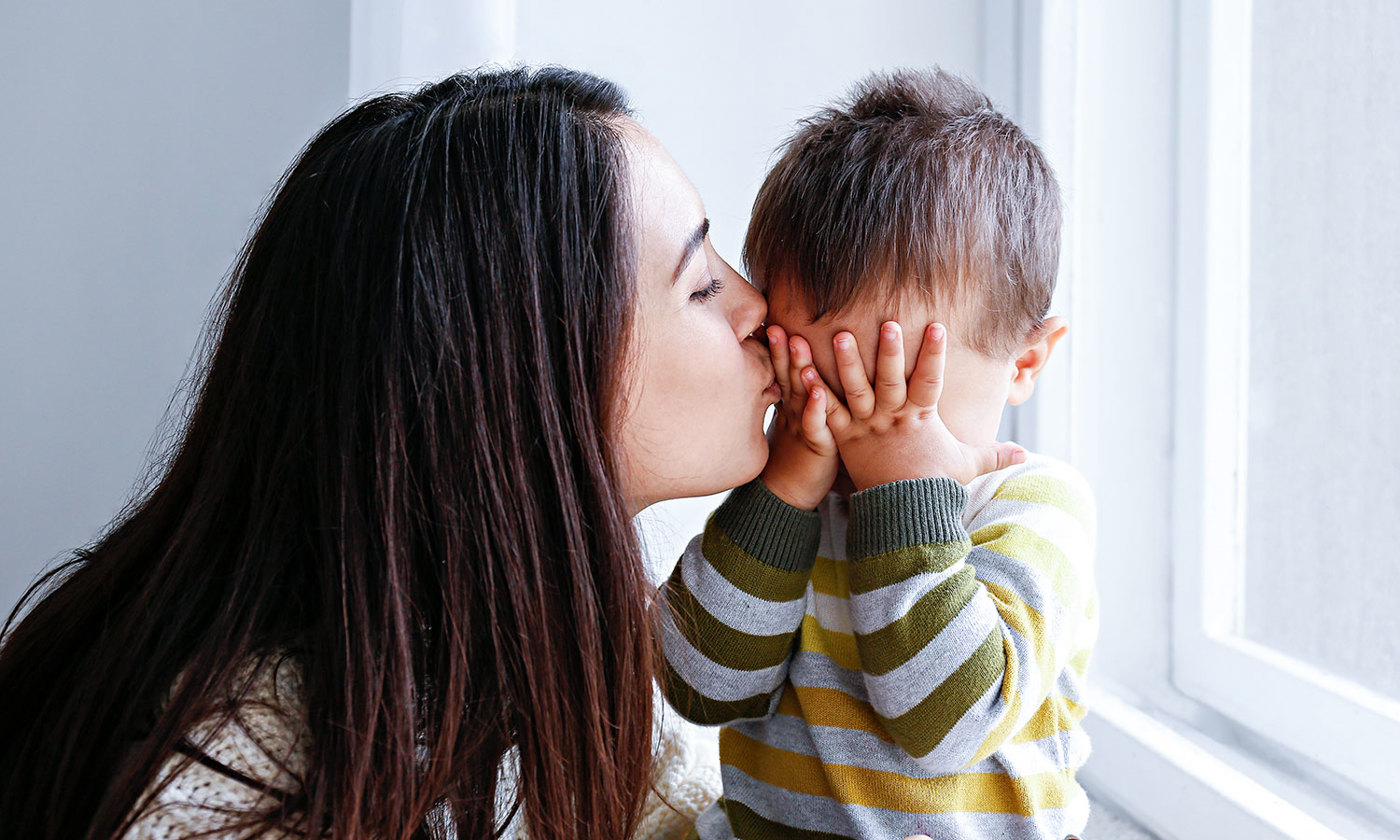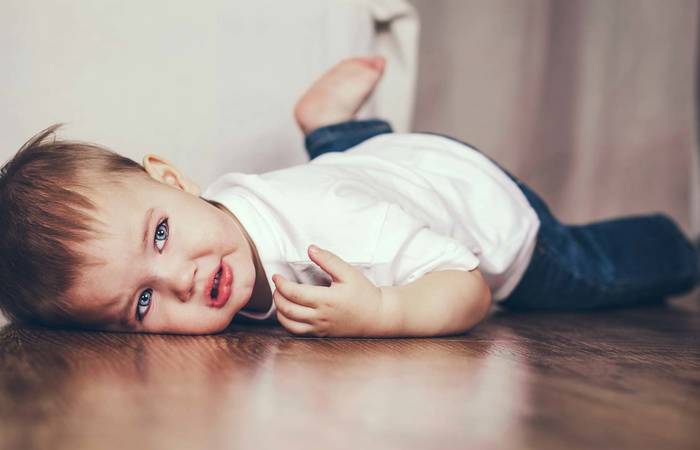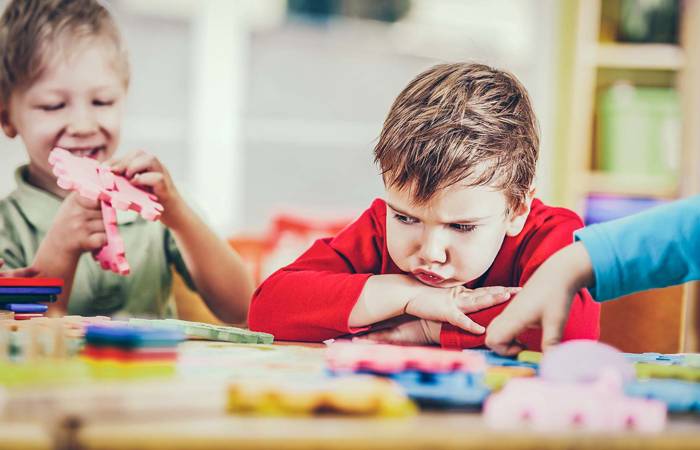Like what you see?
Sign up to receive more free parenting advice.
Thank you for subscribing to our newsletter!
Child Development

Credit: iStock.com/undefined undefined
The three-year-old is inconsolable because her favourite Bluey episode is over. Nothing you do will make it better, not even hitting replay. The sadness of it being over is just too much to bear.
After thirty seconds, she’s happily jumping on the trampoline in a fit of giggles.
A short time later, she is in a fit of anger because she wants the blue cup for her orange juice. Not the pink cup. Even though you’ve never had a blue cup.
And it’s only eight o’clock in the morning.
As a parent, you expected irrational behaviour fuelled by raging hormones when they’re in their teens… but no one warned you of the emotional unpredictability of a small child.
To help young children understand and manage big feelings, ABC Kids has created a series of short programs called Moodies.
Played regularly between other programs or available online, Play School’s Rachael Coopes guides children to name and understand emotions in different ways.
There is an episode on anxiety and using a candle breathing exercise, or the image of a big grey cloud full of rain to depict sadness and how letting go of the rain/sadness makes the cloud become lighter.
“Shows like Moodies serve as a good conversation starter as we teach children about their feelings,” says Dr Kaylene Henderson, a child psychiatrist and one of Australia's leading parenting experts.
“Helping children learn about different emotions, including what they feel like and how to describe them, is an important part of their emotional development as they learn to identify, express and manage their feelings.”
Big feelings in under fives
For many parents, it seems like every feeling their child has is a big one. And they wouldn’t be wrong.
“All feelings seem big when you’re new in the world,” says Dr Henderson.
“Young children haven’t yet developed the essential brain wiring or had the necessary life experience to be able to calm themselves down from big feeling states, which is why they experience such frequent meltdowns.
“Often these moments are in response to feelings of distress, fright or frustration.
“But sometimes our little ones experience such immense happiness or excitement that they’re also unable to handle the intensity of these so-called ‘positive emotions’.”
One of the big feelings that cause most concern to parents is anxiety, which Dr Henderson confirms is on the rise in under-fives.
In fact, a 2020 report by the Australian Institute of Health and Welfare, titled Australia’s Children, found anxiety disorders were the second most common disorder among all children and the most common among girls.
“The way anxiety presents in young children will depend on several factors, including the age of the child, their language capacity and their level of emotional literacy – whether they’ve learned the words to describe their anxious feelings,” explains Dr Henderson.
“A young child might be able to share their worries using their words, or they might appear anxious, seeking constant reassurance from their parent or seeming quick to ‘lose it’.
“Alternatively, they might tend to focus on some of the physical symptoms of anxiety such as a poor appetite, a sick feeling in their stomach or difficulties getting to sleep.”
Self-regulating big emotions
Dr Henderson explains that preschoolers who learn to self-regulate their emotions, in other words, calm down from big feelings, are better equipped to cope with starting school.
“Longer-term, having the ability to emotionally self-regulate also helps them to get along with others, deal with challenges, manage their behaviour and reactions and become more independent,” she adds.
She explains that emotional self-regulation happens in stages.
For babies, parents need to calm them down, often through rhythmic or physical means.
As they get a little older, ‘co-regulation’ happens.
This is where young children can calm themselves down from low-intensity feelings, but parents still need to step in and help to calm them down from those bigger feelings that exceed their capacity.
“Eventually, children will reach a stage of being able to calm themselves down most of the time, just like us adults, and we call this ‘self-regulation’,” says Dr Henderson.
However, she reassures parents that for most children under five years old, they will frequently rely on their parents to help calm them down until they master self-regulation.
Helping children learn about different emotions, including what they feel like and how to describe them, is an important part of their emotional development as they learn to identify, express and manage their feelings.Dr Kaylene Henderson
Stay up to date with the latest news and articles from First Five Years
Thank you for subscribing to our newsletter!
Strategies for parents
Think of self-regulation like walking, recommends Dr Henderson.
Just as children learn to walk, they also learn to calm down, and those big melt-down moments are the same as a child stumbling after a few steps.
“There is no sense in getting frustrated during those ‘stumbles’. Those meltdowns simply demonstrate that the child hasn’t yet mastered this stage of development and the best thing parents can do is to remain calm and provide comfort as the child regroups and tries again,” she explains.
Dr Henderson advises against sending children away to calm down by themselves.
“If they’re demonstrating to you that they haven’t been able self-regulate, then you’re essentially sending them away in the hope that they can do the impossible,” she says.
“Instead, children learn to self-regulate more efficiently if they’ve experienced their parent’s help in co-regulating their emotions.”







